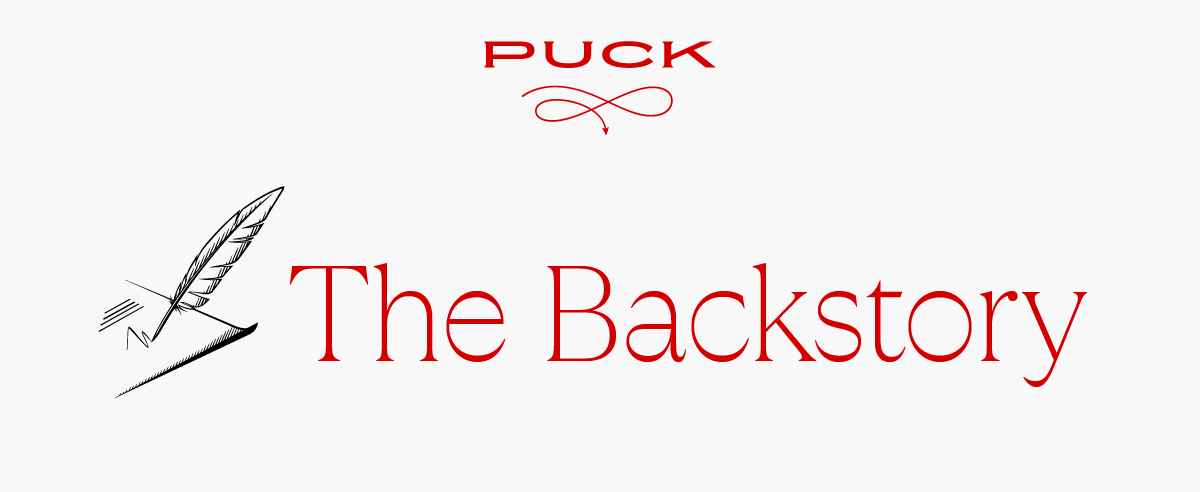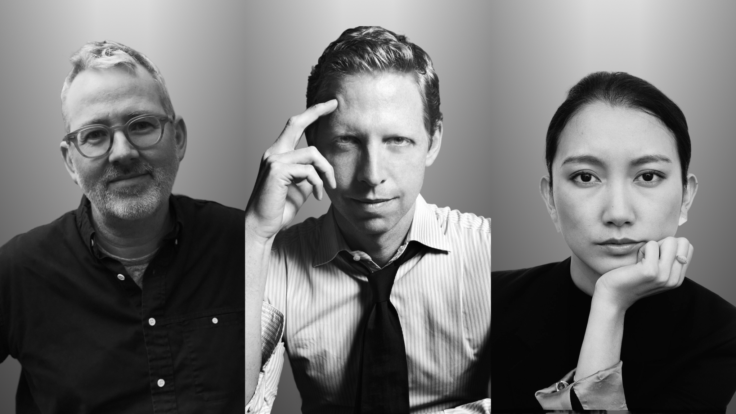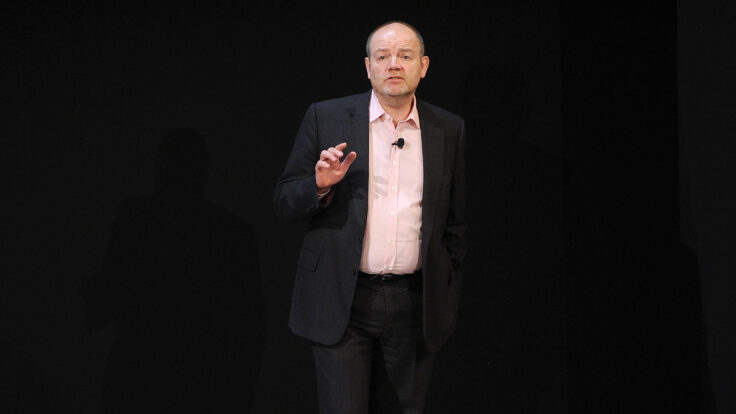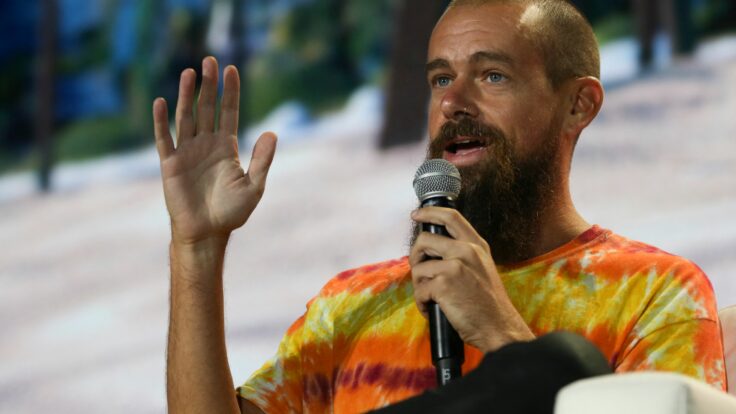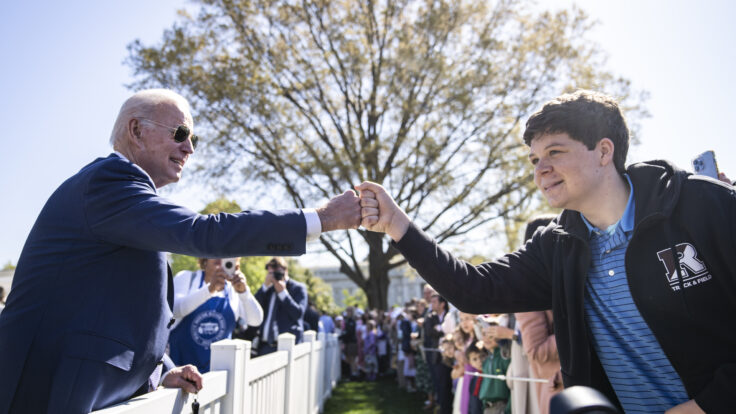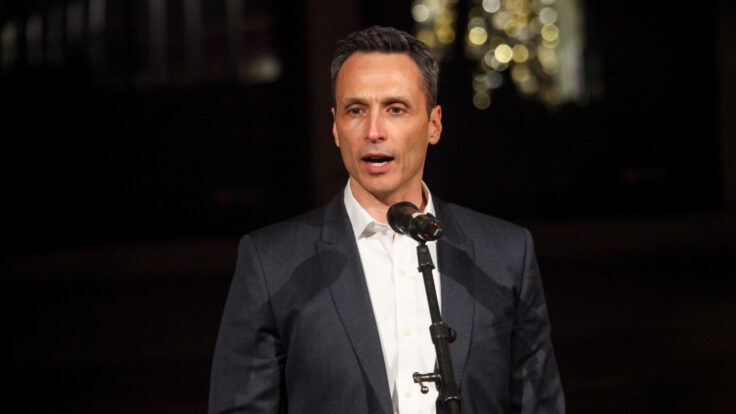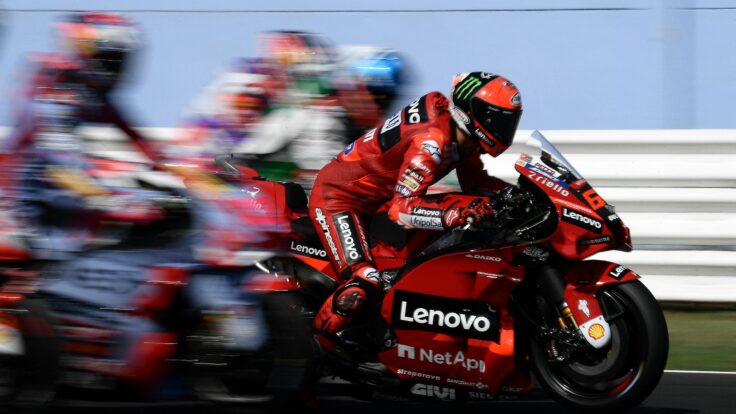|
Good morning,
Happy Saturday morning, and welcome back to The Backstory—your weekend capsule of the best work that we are publishing here at Puck. A hearty welcome to our legions of new subscribers. You can look forward to this round-up email directly from me, Puck’s co-founder, in your inbox every Saturday morning. I hope that it’s an enjoyable and useful guide to all the great work emanating from our young media company.
It was another fantastic week here at Puck—Dylan Byers’ scoopage on a D.C. media shake-up, Julia Ioffe’s report on Russia’s least likely activist, Matt Belloni’s acerbic analysis on Netflix’s new arithmetic, Eriq Gardner’s unveiling of a suit that could impact trillions in global wealth, and Tina Nguyen’s insiderly account of Ron DeSantis’s latest 2024 calculations. Check out some of our very best work, below. And, as always, stick around for the backstory on how it came together.
|
|
The New Establishment
In the earliest days of my career, as I’ve occasionally noted in this space, I worked for the legendary editor Graydon Carter, who loomed over Vanity Fair back in an age when the magazine helped elect presidents, elevate or defenestrate C.E.O.s, and mint the careers of directors and movie stars, alike. By day, I made sure Graydon had what he needed as he rewrote headlines, edited investigations, selected well art, chose illustrators for the contributors pages, gossiped with writers, sat with the lawyers, styled the cover shoots, and hand-selected the items that were featured in the glossy front-of-book pages. By night, hoping to soak up the magazine’s history and educate myself about the biography of our broader culture, I’d roam its vast library, picking through back issues, photocopying articles, and stuffing them into my bag for the long train ride back to Brooklyn.
In the cultural and technological milieu of the early 2000s, we weren’t yet instinctually trained to outsource our brains and curiosities to Google searches and Wikipedia entries. Magazine features were, by and large, how we learned about people and our larger world—their backstories, turning points, early relationships, and more. And Vanity Fair’s metier was its ability to both introduce figures into the culture and also re-introduce the legends of a bygone age.
Movie stars like Will Smith, Jude Law, and Reese Witherspoon were largely ushered into the broader media landscape through their V.F. covers. (Alas, Gretchen Mol, the September 1998 cover star, was a rare miss.) Meanwhile, the magazine’s star writers—Bob Colacello, Maureen Orth, Christopher Hitchens, and so many others—regularly unveiled behind-the-scenes and sometimes under-remembered luminaries, from Gerry Adams to Bobby Short, Nan Kempner to Sue Mengers.
In the intervening years, of course, it’s become a lot more challenging for any media organization to introduce people into the zeitgeist with such zest and alacrity. The Internet is to be blamed for this, sure, but so are publishers and media organizations who have prioritized scale over curation. Indeed, many aspects of the magazine experience no longer exist for good reason, but other cherished arts of that era are indeed, and happily, re-emerging on new direct-to-consumer platforms. Foremost among them is the intense focus on community. Vanity Fair thrived in that era because, among other things, it hand-picked the people and trends that would surprise and delight its audience—which happened to be an accurate and honest reflection of the world that it covered.
At Puck, we aspire to reclaim that very important quality for our new age. And while we spend a lot of time illuminating previously unknown details about popular dramas like Jeff Zucker’s ouster, David Zaslav’s coronation, Laurene Powell Jobs’ growing empire, Tim Cook’s Oscar hopes, or the harrowing war in Ukraine, we also try to introduce new players into our audience’s cultural imagination. This week, for instance, Teddy Schleifer has written a brilliant piece about the emergence of Twilio C.E.O. Jeff Lawson as Silicon Valley’s next great political power player—an heir, of sorts, to Marc Benioff.
|
|
Teddy’s story is fascinating and worthy of your time on many levels. First, I’d be lying if I said I had more than a passing familiarity with Lawson’s background before Teddy filed the piece, and yet I put down the first draft fully cognizant that this was a person I’d be reading about for the rest of my life. Second, Lawson’s very ascent is a further manifestation of what we’ve long posited here at Puck—as you scale the heights of Wall Street, Washington, Silicon Valley, and Hollywood, it’s really all one world, and an increasingly small one at that.
Meanwhile, Lawson’s appearance on the scene is further proof, at least to me, that our late-stage Covid world is about to give way to a new era, populated by new hegemons, all looking to remake the culture in their image. The unfolding drama is the fascination and source material for all of us at Puck, where we’re trying to compose the biography of our age, one day at a time.
Have a great weekend,
Jon
P.S. - if there's something holding you back from becoming a subscriber, I'd love to hear about it. Please feel free to reply to this email with your feedback (replies go directly to my inbox).
|
